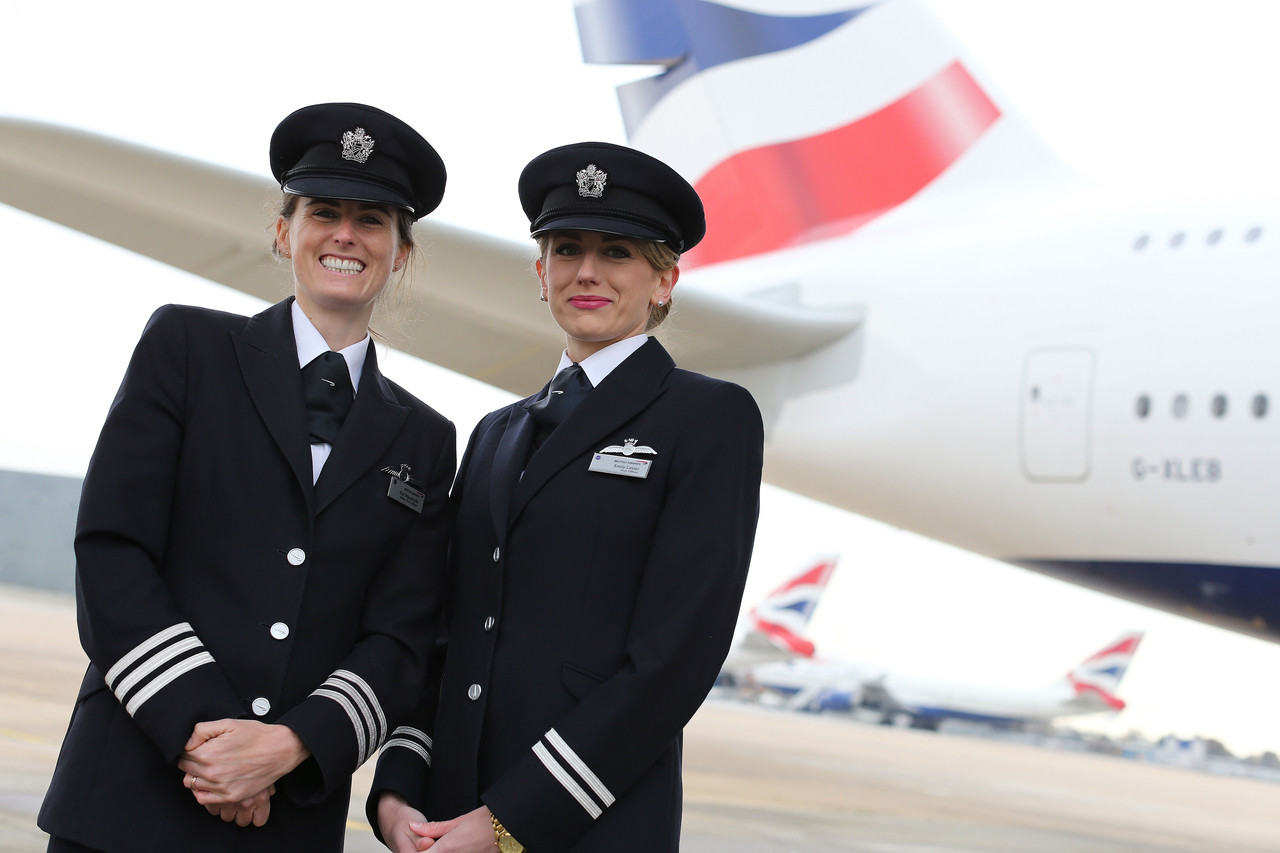
British Airways has released some interesting statistics about the role of women in aviation and the gender pay gap at the Heathrow-based airline. Perhaps unsurprisingly but disappointing to hear nonetheless, BA has revealed that behind the cockpit door remains a male-dominated environment with female pilots making up just 6% of flight crew at the airline.
Elsewhere, though, there’s some good progress in creating gender equality with the latest figures showing the gender pay gap – the median hourly pay difference between men and women – coming in at 10%. That might sound unfair but BA claims it’s way below the UK average of 18.1%.
Since the 1960’s, the gender pay gap has been slowly decreasing yet while much progress has been made, research by the Institute for Women’s Policy Research suggests the gender pay gap won’t close until 2059.
The reasons for the pay gap are many and often complex but according to a 2016 report by the Joint Economic Committee, up to 40% of the difference can still be attributed to outright discrimination.
That’s not the case at British Airways, the airline argues, saying the median bonus pay difference is -19% – favouring women instead of men. The airline says collective bargaining agreements ensure that both men and women are paid equally, with much of the pay gap disparity caused by lack of female representation in high-paying pilot jobs.
But while British Airways says it has been recruiting female pilots for over 30 years, the number of women in the job is still at a lowly 6% (although BA claims the national average is even lower at around 3-4%).
“We know that there is work to do to encourage more women into STEM roles, and specifically into our pilot community,” commented Maria da Cunha, the airline’s Director of People and Legal.
da Cunha says she is “pleased with the progress that we are making in encouraging diversity” but claims the airline “is not complacent,” going onto say the airline is “fully committed to building a workforce that reflects the diversity of the customers we serve and to promote an inclusive and collaborative culture.”
And it’s not just British Airways that is trying to encourage more women to take up more diverse careers throughout the aviation industry – not just sticking to the gender stereotype of becoming a flight attendant.
British low-cost airline easyJet, which also has the same percentage of female pilots as British Airways is hoping to increase the number of new-entrant female flight crew to 20% by 2020 through its Amy Johnson Flying Initiative.
The airline has been working to increase visible representation of female pilots and has even launched an initiative with Girl Guiding UK with the introduction of an aviation-themed badge.
“One reason there are currently so few women pilots could be a lack of visible representation – so often we’re shown men as pilots. This could be sending a message to young girls that if they want to work in aviation, it can’t be as a pilot,” says Brian Strutton, general secretary of the British Airlines Pilots Association.
“We believe the only thing that should matter in realising your dream and securing a job as a pilot should be your ability, not your background, financial situation or gender.”
For now, much of the work to increase female representation will be through creating greater visibility of female pilots to “inspire the next generation.” Projects like International Women’s Day is a good example – with special ‘women only’ flights showcasing the many and varied roles in the aviation industry.
Mateusz Maszczynski honed his skills as an international flight attendant at the most prominent airline in the Middle East and has been flying ever since... most recently for a well known European airline. Matt is passionate about the aviation industry and has become an expert in passenger experience and human-centric stories. Always keeping an ear close to the ground, Matt's industry insights, analysis and news coverage is frequently relied upon by some of the biggest names in journalism.







